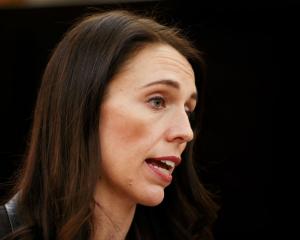
Memories are short, consequences long. Not a Chinese proverb but a warning to pay attention to the workings of our electoral system and to remember why we now have MMP (mixed-member proportional).
This is especially relevant when a recent survey revealed that more than 60% of senior high school pupils did not know how it works. They need to be taught at least the basics of MMP. That is, we have two votes: one for a member of Parliament to directly represent us in our local electorate; and one for the party we favour.
And it is the proportion of these party votes that dictates how many MPs each party obtains of the 120 in our Parliament. One party or a coalition of parties must gain at least 61 to form a government.
In 1993, the country voted to get rid of the first past the post system and replace it with proportional MMP. Why?
Because the public had lost faith in a crude system that provided only one-party rule. In a country without a second house, or any other check or balance, we were living under what Sir Geoffrey Palmer called elective dictatorships. Older readers will recall what this meant 40-45 years ago when one man, National’s Sir Robert Muldoon, was both prime minister and finance minister.
When he was tipped out by a "landslide" to the Labour Party in 1984, we then experienced one of the most socially damaging regimes in our country’s history. Rogernomics or neoliberalism was applied, without warning, even more severely than Reaganomics in the United States and Tory Thatcherism in the UK.
The following National Government doubled down on it. By 1993, the electorate had had enough of government without checks and balances and voted to put in place an electoral system that would provide them.
Since 1996 we have had a sequence of governments with one of the main parties in coalition with one or more minor parties that have acted as a brake or modifier of extreme policies. MMP has also led to a much more proportional representation in Parliament of women, Maori, Pasifika and other ethnic groups. It is no coincidence that our first three female prime ministers have been in office since then.
How do the different parties in Parliament at present feel about MMP?
National has always been opposed to it. The opposition to MMP in the 1993 referendum campaign was run and funded by National Party luminaries and supporters. These engineered another referendum in 2011 with the hope of overturning it. When this did not succeed, the then-justice minister, Judith Collins, rejected a recommendation from the Electoral Commission, following a thorough nationwide survey, that the threshold for the party vote should be lowered to 4% and the coat-tailing rule abandoned. As the current leader of the National Party, Ms Collins has confirmed her opposition to MMP.
Labour was initially opposed to MMP. In 1993, Labour’s Helen Clark teamed with National’s Simon Upton in an abortive attempt to persuade referendum voters against it. After gaining office in 1999, Labour has come to terms with MMP and, before the 2017 election, said it would implement the Electoral Commission’s recommendations.
This was scuppered by New Zealand First’s Winston Peters when he entered into coalition with Labour, although his party’s presence in Parliament depends on MMP. One can speculate on his arcane thinking but it would be ironic if NZ First polls this election somewhere between 4% and 5% and fails to be returned to Parliament.
Mr Peters did demand the noxious "waka-jumping" rule as a coalition condition, preventing any list MP from changing parties during a parliamentary term. This anti-democratic move was occasioned by MPs leaving his own party in the 1990s.
The Greens owe their parliamentary representation to MMP and they would seek to implement the recommendations of the Electoral Commission. The Greens are in Parliament on their own merit, gaining 6.3% of the party vote at the 2017 election.
But Act New Zealand’s David Seymour is there only because of the gerrymander by National of not campaigning for the electorate vote in Epsom, although its party vote there is overwhelmingly in their favour. Although anti-MMP, National is happy to rort the system for its own advantage.
Current polls indicate it is possible Labour may win the 2020 election with a sufficiently high proportion of the party vote for an outright majority.
It would need 47%-48% (given the loss of some party votes to minor parties that do not reach the 5% threshold). This would return us to a latterday version of the old elected dictatorships.
We do not need this and it might rebound to bite Labour in 2023 if they overreached themselves during the next term of office. Think carefully before you vote on October 17.
But do make sure you vote for an MMP government. It is our electoral system, not any politician’s.
■ Dunedin author Philip Temple was given a Wallace Award by the Electoral Commission for his writing on electoral issues.
Comments
While you can't argue with Temples overall summary of the history of MMP there is one point I would like to make. NZers were given 4 options of voting systems and they chose MMP.
I believe they chose MMP over the alternatives because it was the easiest to understand, not because it was the best or fairest alternative. The public were keener on punishing the Members of Parliament more than they were on a fairer system.
This article makes the point that MMP is not well understood, can you imagine the extent of the ignorance and confusion if we had an STV or PV or SM system n place.
Under FPP the Social Credit party under Bruce Beatham, gained about 10% of the votes in one election but won only two seats. Unfair. Similar to Hillary Clinton having three million mor votes than Donald J Trump, but not being named president.














